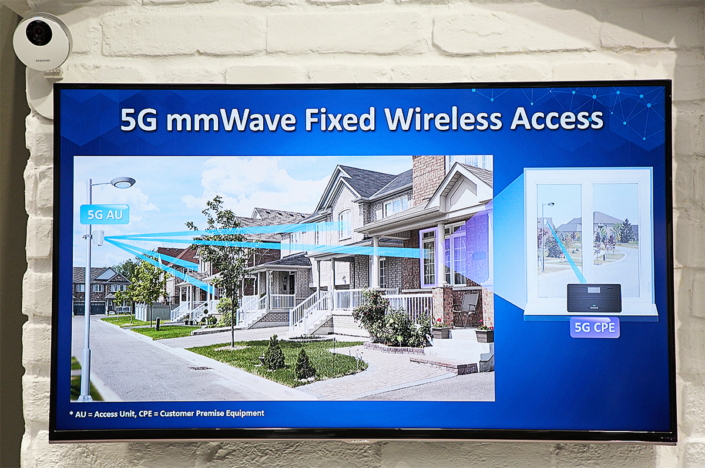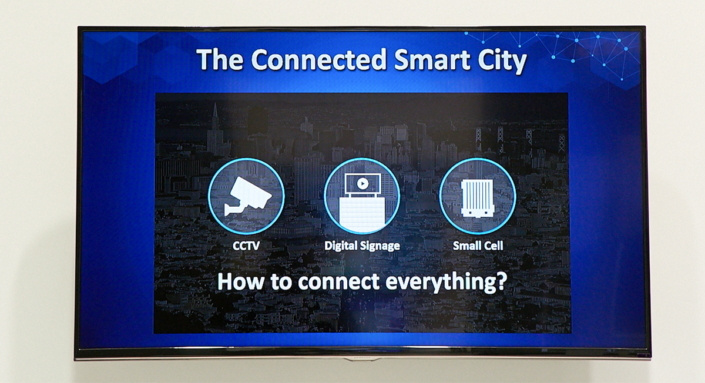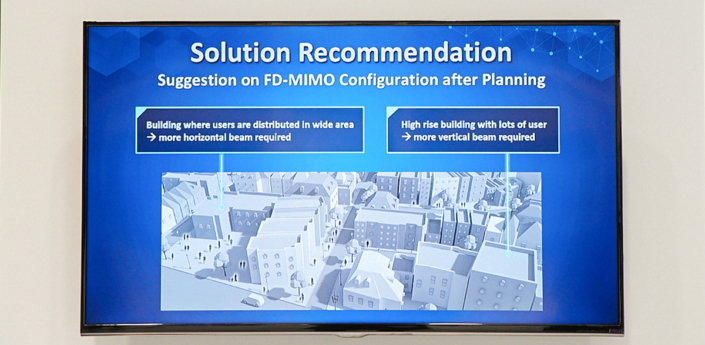[Photo] Samsung Networks Booth Showcases Potential Future of Mobile Communications at MWC 2017
on February 28, 2017
The Samsung Networks Booth at MWC 2017 showcases a range of exciting potential applications for 5G technology – the next phase of mobile connectivity – as well as the lengths Samsung is taking to make those possibilities reality. Featuring interactive exhibits exploring the company’s latest mobile technologies, solutions and developments, including its announcement of the world’s first end-to-end 5G product portfolio, Samsung’s Networks Booth demonstrates the company’s commitment to enriching users’ lives through relentless technology innovation.


Samsung’s new end-to-end 5G product lineup includes 5G chipsets (RFIC and Modem), a 5G Radio base station – Access Unit(top left), a 5G Home Router – Customer Premise Equipment(top right), and a Next-Generation Core. As illustrated here, when placed in a window, facing a 5G Radio base station, the 5G Home Router will offer users gigabit home broadband service.

When 5G FWA (Fixed Wireless Access) networks expand to diverse use cases, they’ll offer a highly advanced and flexible means to provide network connections for many different devices, including IoT technology and even connected cars. As more devices connect, they’ll require more base stations to support them, which typically connect to the network via fiber optic cables. This exhibit elaborates on how 5G wireless backhaul will connect base stations directly to the core network, which means more data capacity in a given area and easier deployment for terminals like CCTV and signage.

With 5G, video analysis technology, which could feasibly be used to identify individuals on video feeds, will benefit from high-speed data transmission, edge computing, accommodate citywide HD video feeds and real-time video processing, and also become easier to apply in a range of business areas.

The rise of HD video, virtual reality and augmented reality content has led to drastic increases in data use. Indian network operator Jio, which handles some of the world’s heaviest 4G LTE data traffic, utilizes Samsung’s Data Monitoring & Analysis (DMA) and Voice Monitoring & Analysis (VoMA) tools to identify root causes of congestion and maximizes user experience.

Samsung created this 3D RF planning solution, which uses 3D maps to accurately analyze building distribution – a critical factor when planning networks – collects service quality information, and automatically suggests the best options to enhance users’ experience, such as locations to install additional base stations.

Samsung also announced a full lineup of small cell products for homes and enterprises that support shared spectrums (CBRS and LAA) and wireless access points – to tackle network overload and service quality degradation, especially in indoor environments.
Samsung will be exhibiting these technologies and solutions at its MWC 2017 Networks Booth (Exhibit Hall 2 Stand 2M10) from February 27 March 2 in Barcelona.